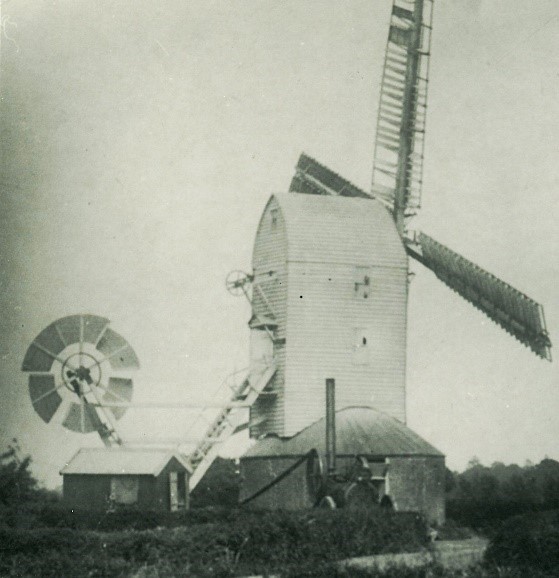Brief answers to the questions on Charsfield Past.
Q1- The text comes from the Domesday Book, written in Latin, much of it highly and inconsistently abbreviated? However, the first line is reasonably decipherable.
Removing “In” from the start of the first word gives our village name = caresfelda.
Robert de Glanville is the local lord; Robert Malet is tenant-in-chief above him.
At the end of this line: xxiiii lib’ho’es = xxiiii liberi homines = 24 freemen.
Caresfelda appears once in the Domesday Book, but there are 10 other entries for different landowners with different versions of the village’s name – Ceresfella, Cerfella, Keresfelda etc. Charsfield totals to a remarkable 93 households (mostly freemen), putting it, by this measure, easily in the top 20% in the country – by comparison, Woodbridge had only 35, Wickham Mkt 25, though Ipswich had 322.
Q2 – In medieval times, to which local town did Charsfield have to pay dues – “half a knight’s fee and guard rent? Framlingham. This lasted until around 1590 when the Lord of Charsfield Manor, Sir Henry Bedingfield, obtained a grant to cease the payment.
Q3 – In 1724 Rebecca Burton of Hatton Garden, London was “admitted” to Charsfield Manor …. her claim to inherited land in Charsfield was registered on the Manor Roll and she received a copy. This type of ownership was called copyhold. The manor would hold a court, usually presided over by the Chief Steward. Other local landowners or their representatives could attend to ensure the correct land area and properties were claimed. A couple of generations earlier, Rebecca’s ancestors had lived locally at Kettleburgh and Pettistree, owning both freehold and copyhold land in Charsfield.
Q4 – In the 1700s, which roadway in Charsfield was called Pudding Lane? – Davey Lane. The field edged by Davey Lane, Magpie Street and the Broadway continued to be called “Puddings” in Victorian times. Possibly the name came from the pudding-shaped chiff-chaff nests often found there.
Q5 – Robert Block baptized 15 Sep 1727; Mary Leggett buried 5 Jul 1728; Thomas Oxe of Ufford & Mary Spalding (Widow) married 22 Apr 1730. These are our earliest parish records of a birth, a death and a marriage in the village. Unfortunately, the parish record books for more ancient times were lost a long time ago.
Q6 – Why did Joseph Kersey of Dallinghoo choose in his Will of 1816 to bequeath £200 to set up a charity in Charsfield, and for what purpose was the money to be used? Joseph Kersey owned land in Charsfield and most likely employed agricultural labourers there, as he probably did in three other villages that he left money to – Dallinghoo, Earl Soham and Marlesford. The purpose was to provide “Bread and Coals for the Poor”.
Q7 – What special structure did the following Charsfield places all have on their land – a house on the Broadway, King’s Farm and Ivy Farm (both of these in Hall Road)? All had windmills.

The one at Ivy Farm is on a 1783 map.
The Threadkells at King’s Farm are recorded as millers up until the mid-1800s.
The one on the Broadway (shown in the picture), just north of present-day Mill House was the last. It was pulled down in 1919.
Q8 – How much did the new rectory cost to build in 1862/3 (less than £1,000)? £600
Q9 – Eliza Pemberton … Julia Annie Clark all had what role (in this order)? They are the (known) parochial schoolmistresses from the time the new school was built in 1863.
Q10 – Where in Charsfield around the 1900s might someone have encountered “Fiddler Billy Harris” and the “Earl Soham Slog”? Gypsy Fiddler Billy Harris would have played often in the Three Horseshoes and other hostelries or, of course, he might have been heard up on the Monewden Road, where his caravan was. The Earl Soham Slog was one tune he likely performed, and he surely must have played “Billy Harris’s Hornpipe”! Associated with these traditional music players would be step-dancing. Billy’s grandson, Alger was a renowned exponent. Fred Whiting, a more recent fiddle player, observed of Alger – “I played for him in Charsfield Horseshoes … and by crikey he could hop!”
Q11 – In the 1930s many articles concerning Charsfield appeared in the local papers written under the pseudonyms of “Black Cat” and “Keepitdark”. They were reports on local football matches which commanded a surprising number of column inches, most particularly when Charsfield played Framlingham Town. The pseudonyms no doubt were valuable cover to enable criticism of the referee’s decisions!
Q12 – Early in World War 2, as part of the response to feared invasion, significant defences including pill boxes and a searchlight were deployed in Charsfield. Whereabouts was this? Above Black Barn Farm (until recently the Duck Farm on Monewden road), on the border with Hoo.
My thanks to those who have provided information relating to the topics of these questions.
December 2021 Contact: charsfieldpast@btinternet.com